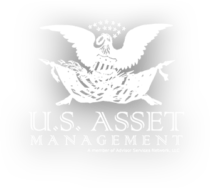When the stock market falls, it’s easy to worry about your investments and question your strategy. Here are 3 strategies to help you relax during volatile markets.
- Turn off the TV. Bad news sells advertising time, and the news networks know it. If they can keep you watching, they earn more from their advertisers. Stop feeding the beast, turn it off and go for a walk or spend time with the important people in your life. Unplugging is good for you.

2. Don’t check your balance every day. As time passes and we save more, our account balances grow. Small changes are magnified. Think back to when you accumulated your first $10,000. At some point, the market dropped by 10% or even 15% (and it did, several times in the past) and your $10,000 declined to $9,000 or even $8,500. Did you worry? Probably not. Why? It was a modest sum. But now, when you have more, a 10% or 15% drop feels horrible. Why? When you focus on the dollar amount and not the percentage, the number feels larger. Checking your balance every day during market turbulence can cause you to make the mistake of selling investments to relieve the stress of watching your account balance bounce around. You can do real damage; it is self-inflicted and hard to repair.
In my opinion, to be successful investing, you need to use someone with the experience and credentials that come with advanced training like a Certified Portfolio Manager (CPM®). When you have a professional who is trained in portfolio management and participates in regular continuing education, they are trained to search for undervalued investments, make dispassionate decisions and avoid behavioral mistakes.
- Use a Certified Portfolio Manager (CPM) to manage your investments.
What is a Certified Portfolio Manager?
There are approximately 300,000 investment advisors in the country, many with acronyms following their name on the card. There are many certifications behind those names; at least 15, give or take a few. To the untrained eye, knowing which one you need your advisor to have can seem a bit daunting.
Rather than list all the certifications and confuse the issue, let’s focus on what I believe to be one of the most important certifications; CPM (Certified Portfolio Manager). A CPM certification not only requires a minimum of at least 3 years of professional experience to pursue this certification, which demonstrates an in depth understanding of concepts and technical expertise, but also requires designees to consistently complete at least 40 hours of continuing education every two years. The CPM (Certified Portfolio Manager) certification initially requires over 200 hours of study over the course of a year followed by a final exam at the conclusion of a week of class.
A very common certification is the Certified Financial Planner or CFP®. However, that program spends only a fraction of the time on portfolio management and more time on financial goal planning related to your income, expenses, savings rates, social security and estate planning. A CFP is good at telling you if you have enough money to reach your goal or how much more you need to save to get there. All important issues I grant you, but those are mathematical equations based on an assumed rate of return of on your portfolio.
Unlike the focus of a Certified Financial Planner, a Certified Portfolio Manager is expert at determining how not only to generate return, net after fees, but to maximize that return as well as minimize losses during volatile market swings.
You can research and compare professional designations by visiting www.finra.org.

David.Cross@us-am.com


